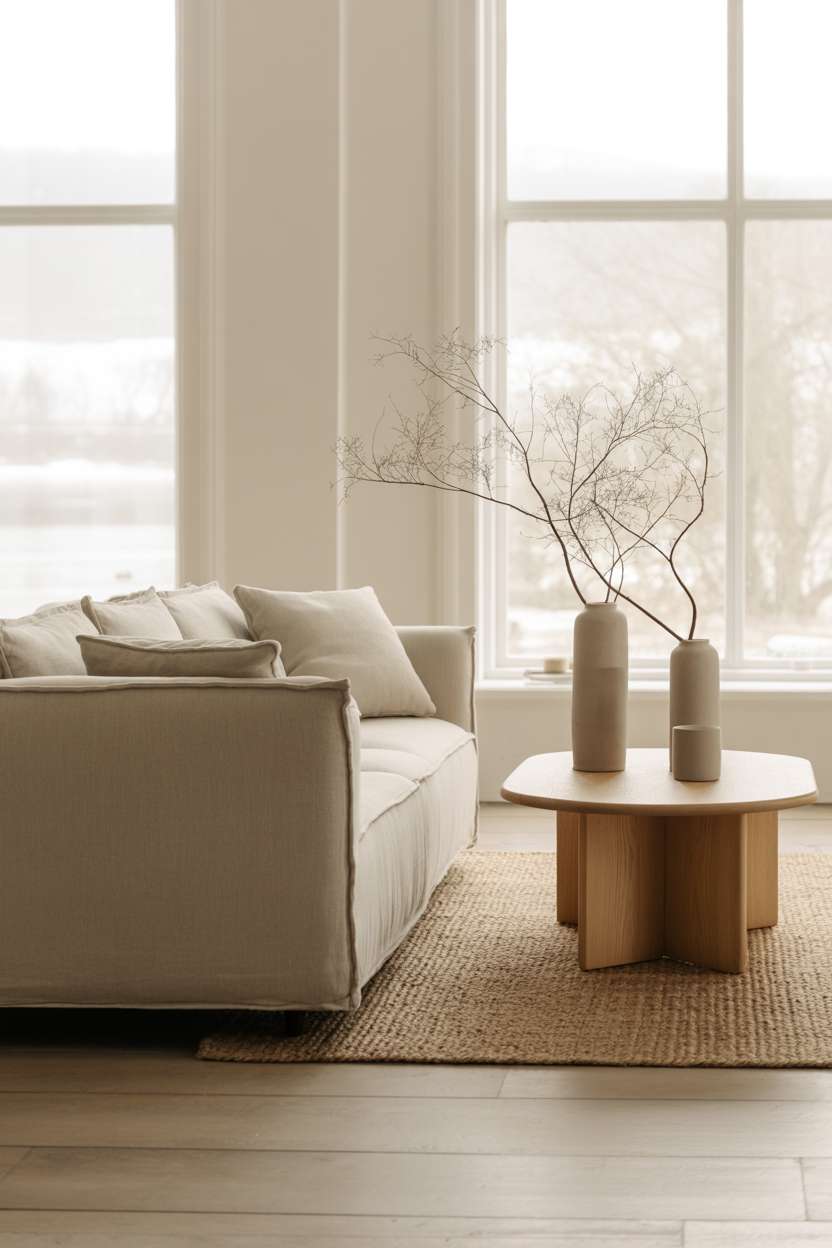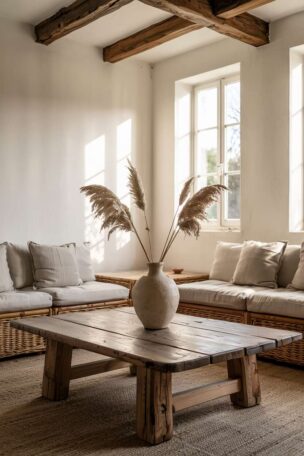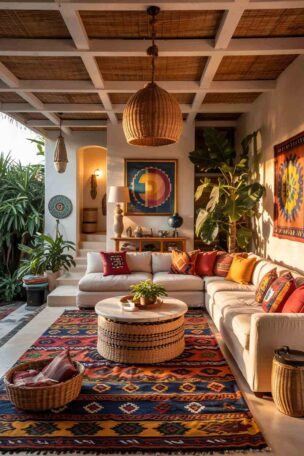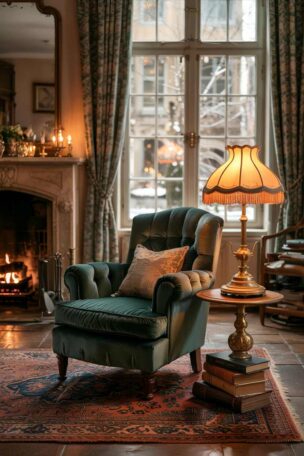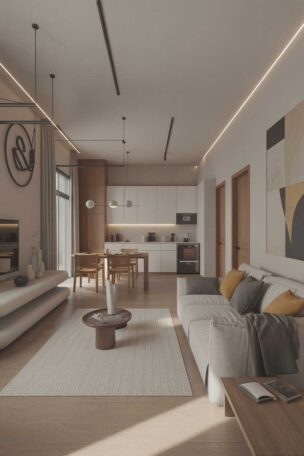Japandi interior design represents a beautiful marriage between two distinct yet complementary design philosophies.
This hybrid aesthetic combines the serene minimalism of Japanese design with the cozy functionality of Scandinavian style.
The result is a design approach that creates peaceful, meaningful living spaces perfect for modern life.
What is Japandi Interior Design?
The Philosophy Behind the Movement
Japandi design draws its strength from two powerful cultural concepts.
The Japanese principle of wabi-sabi teaches us to find beauty in imperfection and naturalness.
This philosophy celebrates the authentic character found in handmade items and the natural aging process.
The Scandinavian concept of hygge focuses on creating coziness, comfort, and overall well-being in our daily lives.
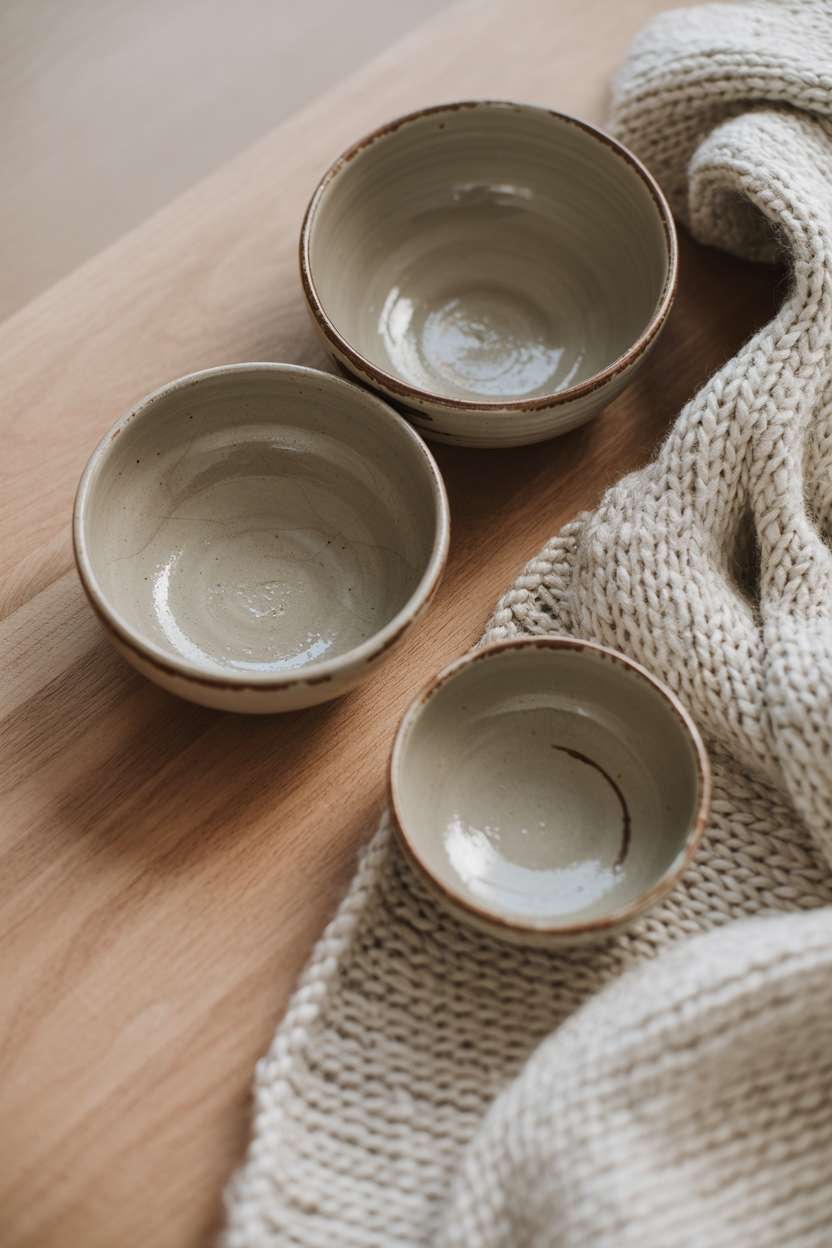
This East-meets-West movement prioritizes simplicity and sustainability above all else.
Japandi spaces reject excess in favor of carefully chosen elements that serve both functional and aesthetic purposes.
Each item in a Japandi home has earned its place through beauty, utility, or both.
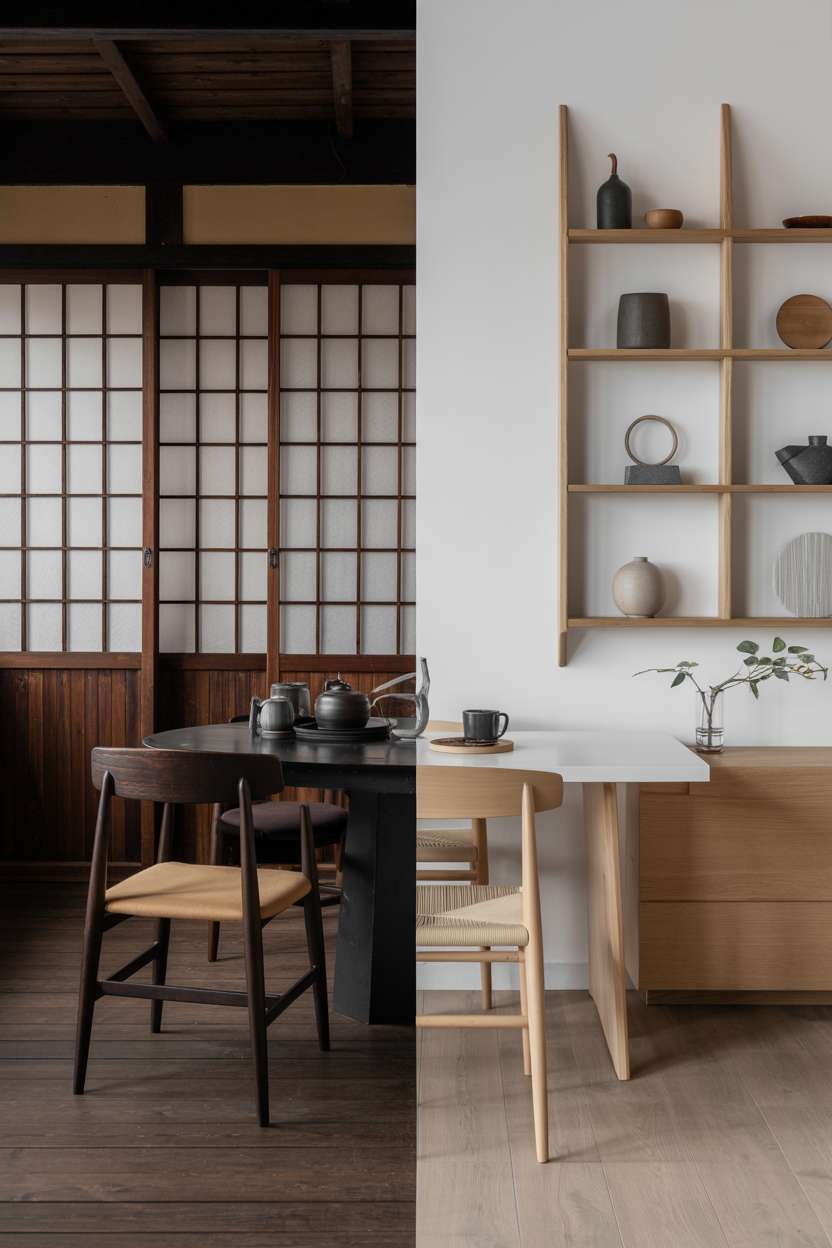
Core Principles of Japandi Style
Minimalism with purposeful functionality forms the backbone of Japandi design.
Every piece of furniture, every decorative object, every color choice serves a specific purpose.
This approach eliminates visual clutter while maintaining the warmth necessary for a comfortable living environment.
Quality craftsmanship takes precedence over quantity in Japandi interiors.
Handmade items with visible craftsmanship marks are preferred over mass-produced alternatives.
This preference reflects respect for traditional skills and creates unique character in each space.
Connection to nature flows through every aspect of Japandi design.
Natural materials, organic shapes, living plants, and abundant natural light create spaces that feel grounded and peaceful.
This connection helps inhabitants feel more balanced and centered in their daily lives.
Natural Materials: The Foundation of Japandi Design
Wood as the Primary Element
Wood serves as the primary material in Japandi interiors, creating warmth and natural beauty.
Light Scandinavian woods like oak, ash, and pine provide brightness and airiness.
These contrast beautifully with darker Japanese varieties such as walnut, cedar, and teak, which add depth and sophistication.
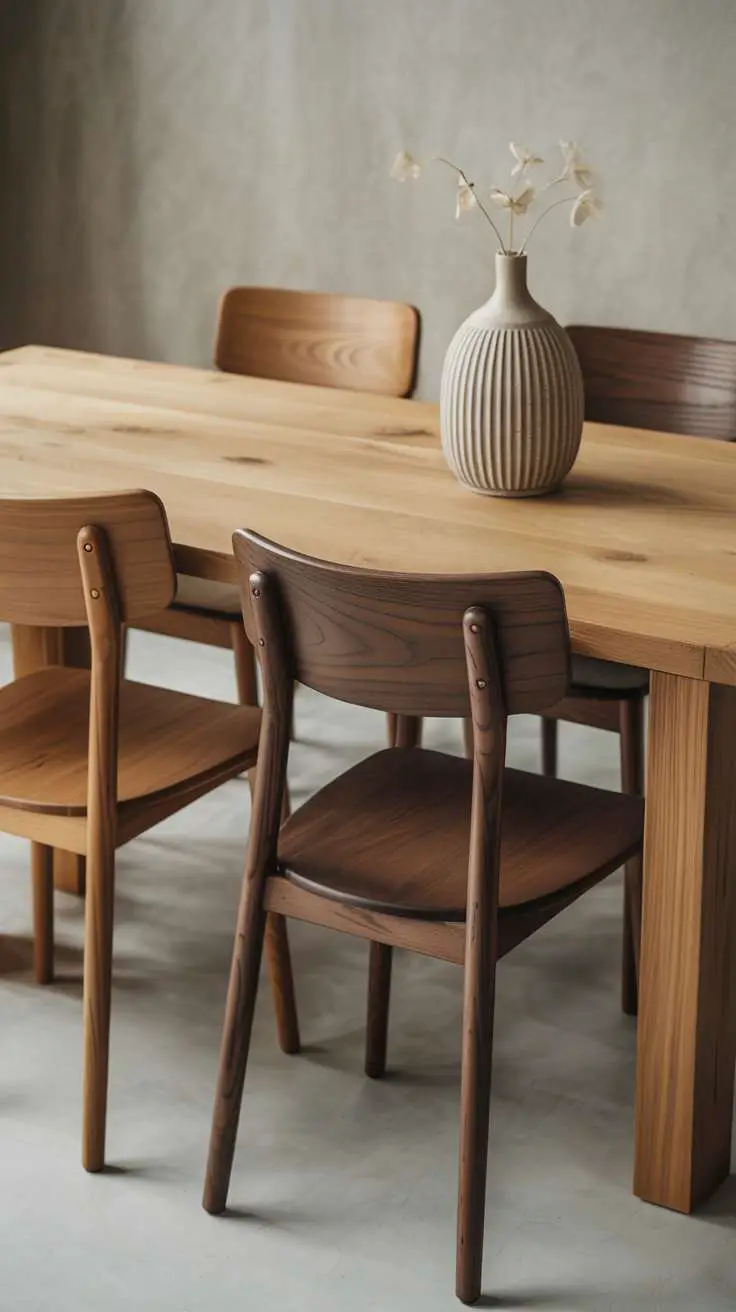
Celebrating natural imperfections and grain patterns is central to the Japandi aesthetic.
Rather than hiding wood’s natural characteristics, this design style highlights them.
Knots, grain variations, and slight color differences are viewed as features that add personality and authenticity to furniture and architectural elements.
Stone and Earth Elements
Stone materials like granite, marble, soapstone, and slate bring durability and natural beauty to Japandi spaces.
These materials work particularly well in kitchens and bathrooms, where their practical properties complement their aesthetic appeal.
Each stone type offers unique patterns and textures that cannot be replicated artificially.
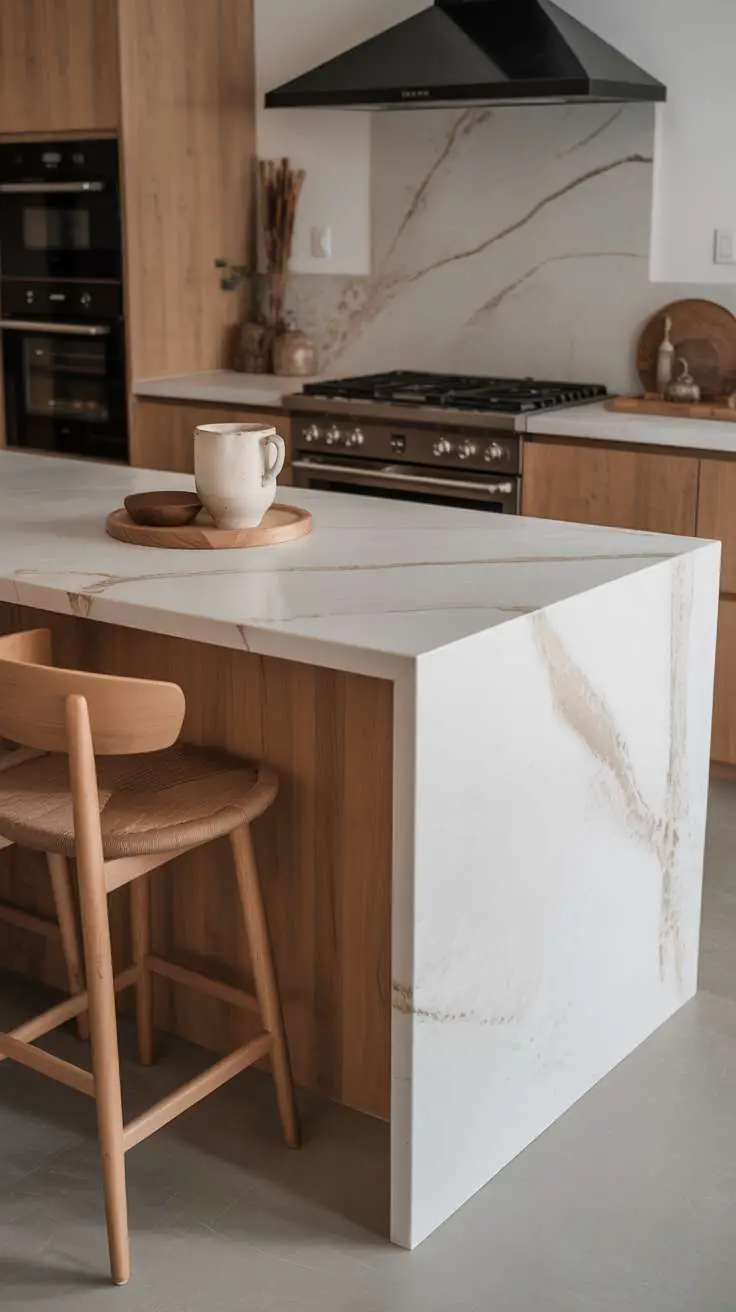
Textural variety and durability make stone an ideal choice for Japandi interiors.
The cool touch of stone provides a pleasant contrast to warm wood surfaces.
Stone’s longevity aligns with Japandi principles of sustainability and quality investment in home materials.
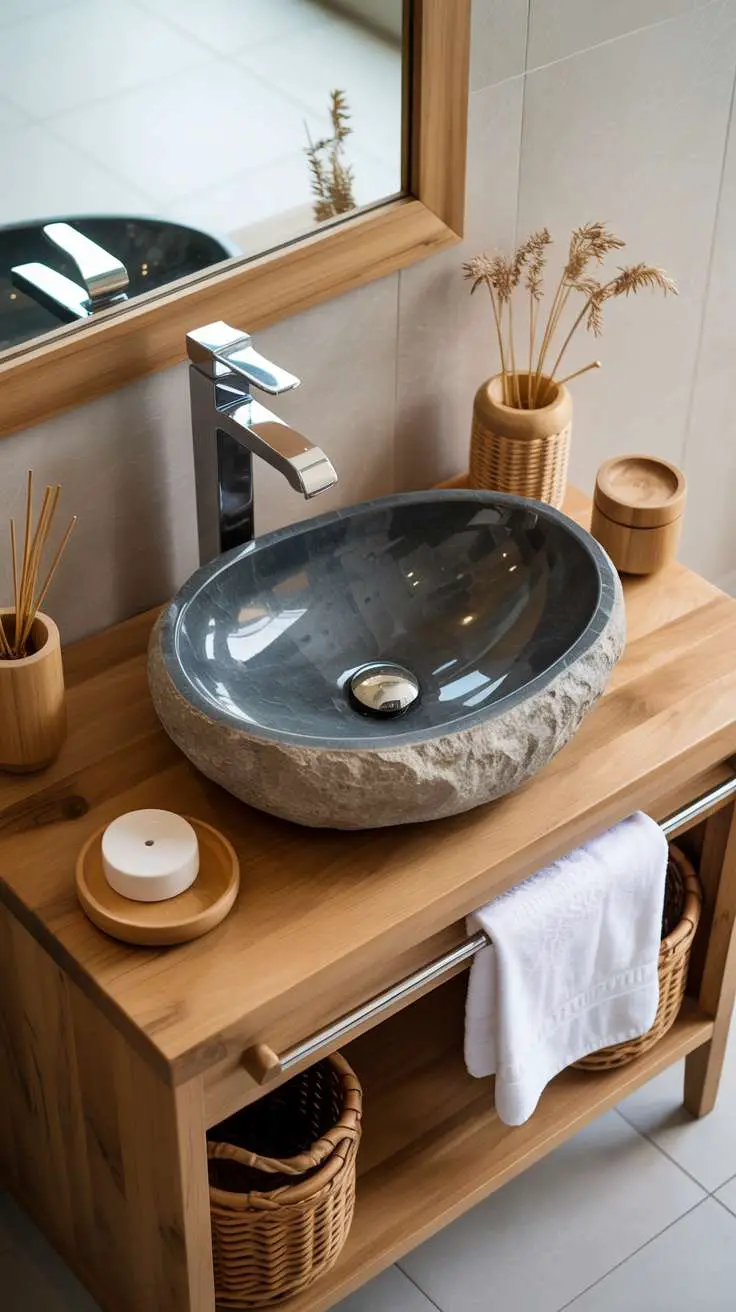
Sustainable Fibers and Textiles
Natural fibers form the textile foundation of Japandi design.
Linen, organic cotton, wool, and bamboo provide softness and comfort while maintaining the style’s commitment to sustainability.
These materials age beautifully, developing character over time rather than simply wearing out.
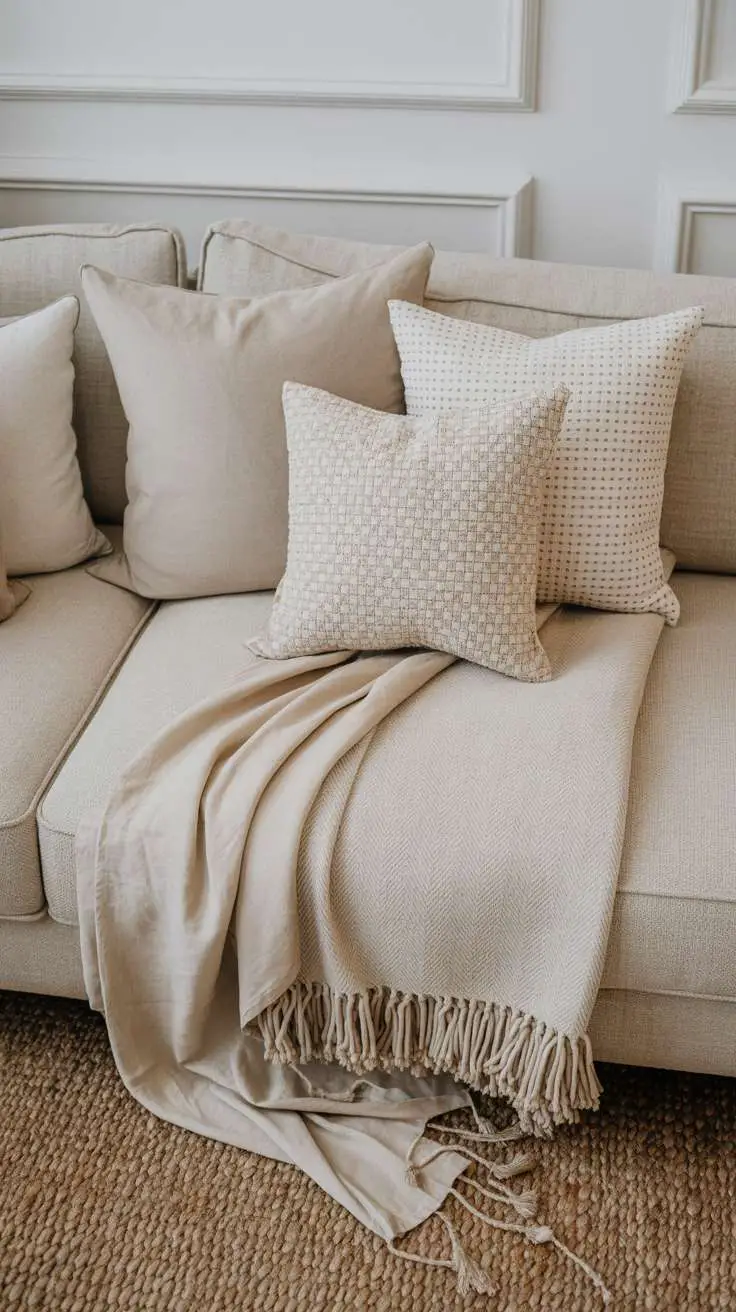
Rattan, wicker, and natural weaving techniques add sculptural interest to Japandi interiors.
These materials bring organic shapes and patterns that soften the clean lines typical of minimalist furniture.
Woven storage solutions provide necessary functionality while maintaining aesthetic appeal.
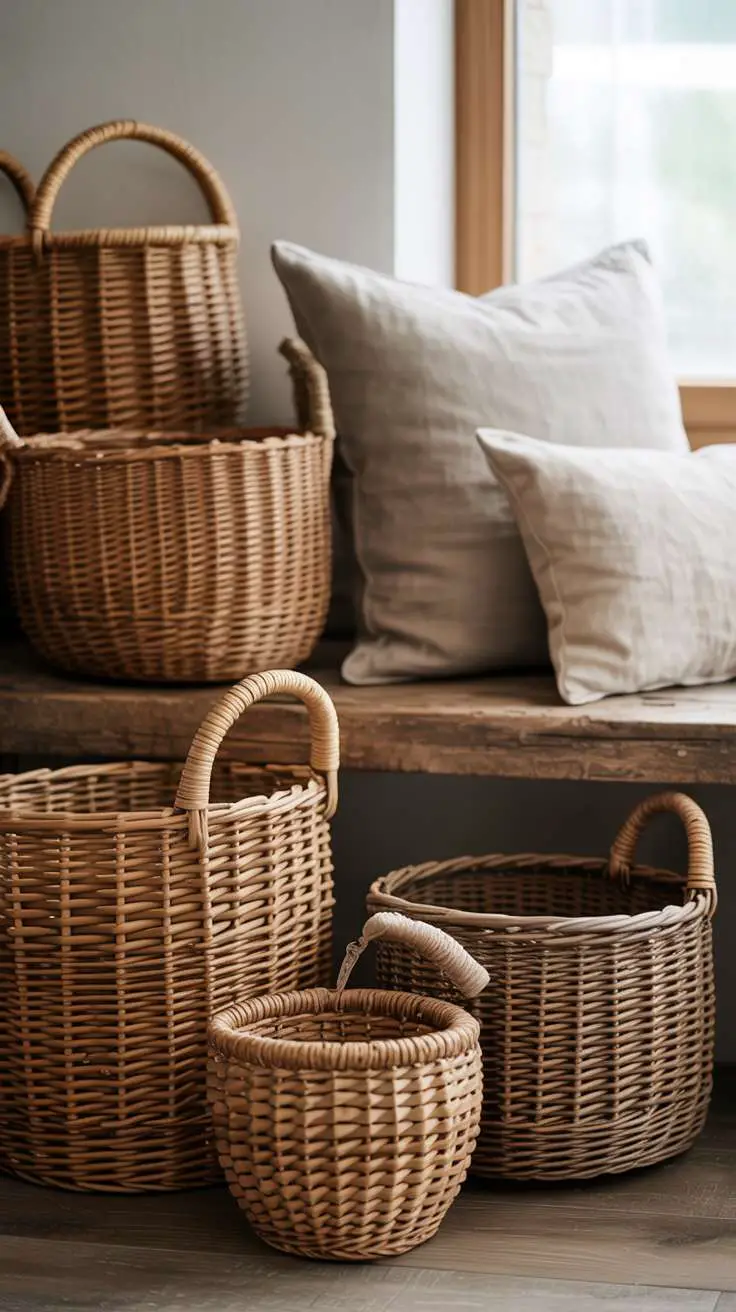
Color Palettes That Create Tranquility
Neutral Base Colors
Off-whites, beiges, and soft grays form the foundation of Japandi color schemes.
These neutral tones create a serene backdrop that feels peaceful and uncluttered.
They reflect and amplify natural light, making spaces feel larger and more open than their actual dimensions.
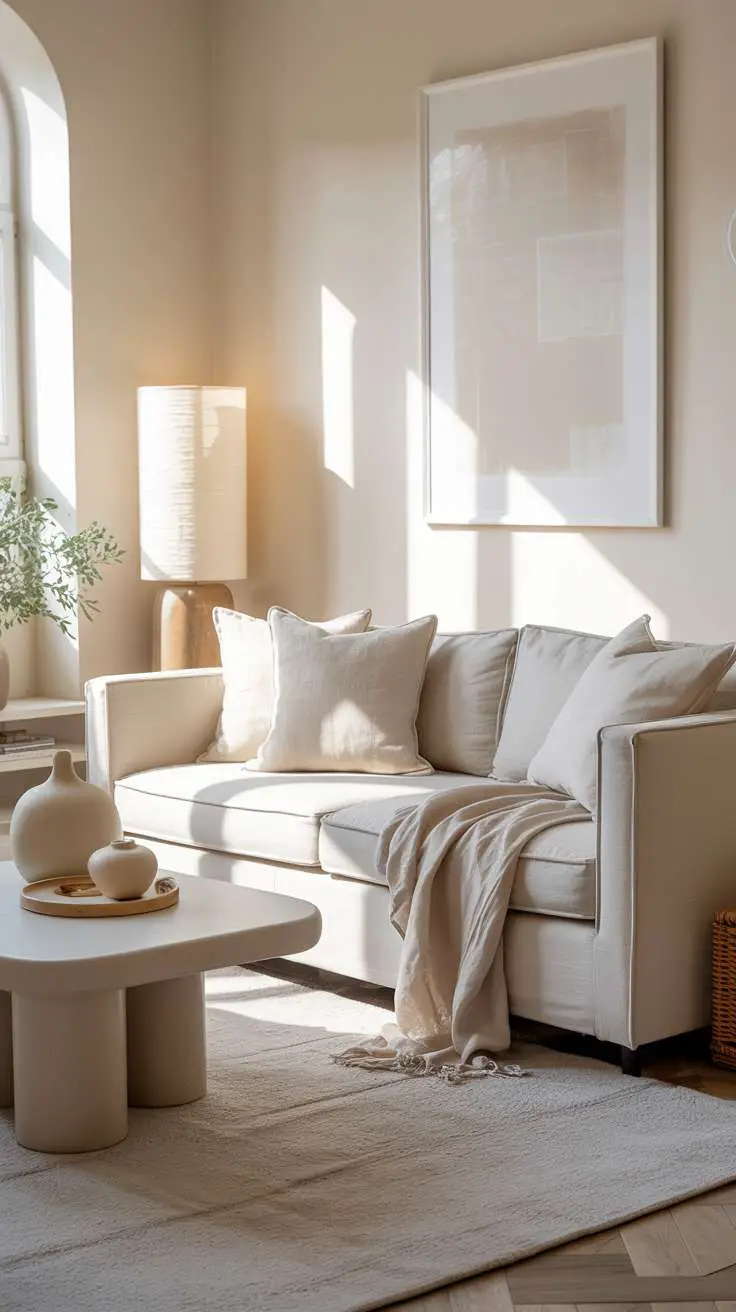
Earthy browns and muted greens add warmth to the neutral palette without overwhelming the senses.
These colors connect interior spaces to the natural world outside.
They provide gentle contrast while maintaining the overall sense of calm that defines Japandi interiors.
How Colors Affect Mood and Space
Light amplification techniques maximize the impact of natural illumination in Japandi spaces.
Light colors on walls and ceilings help bounce sunlight throughout rooms.
Strategic placement of mirrors and reflective surfaces increases brightness without adding artificial lighting during daylight hours.
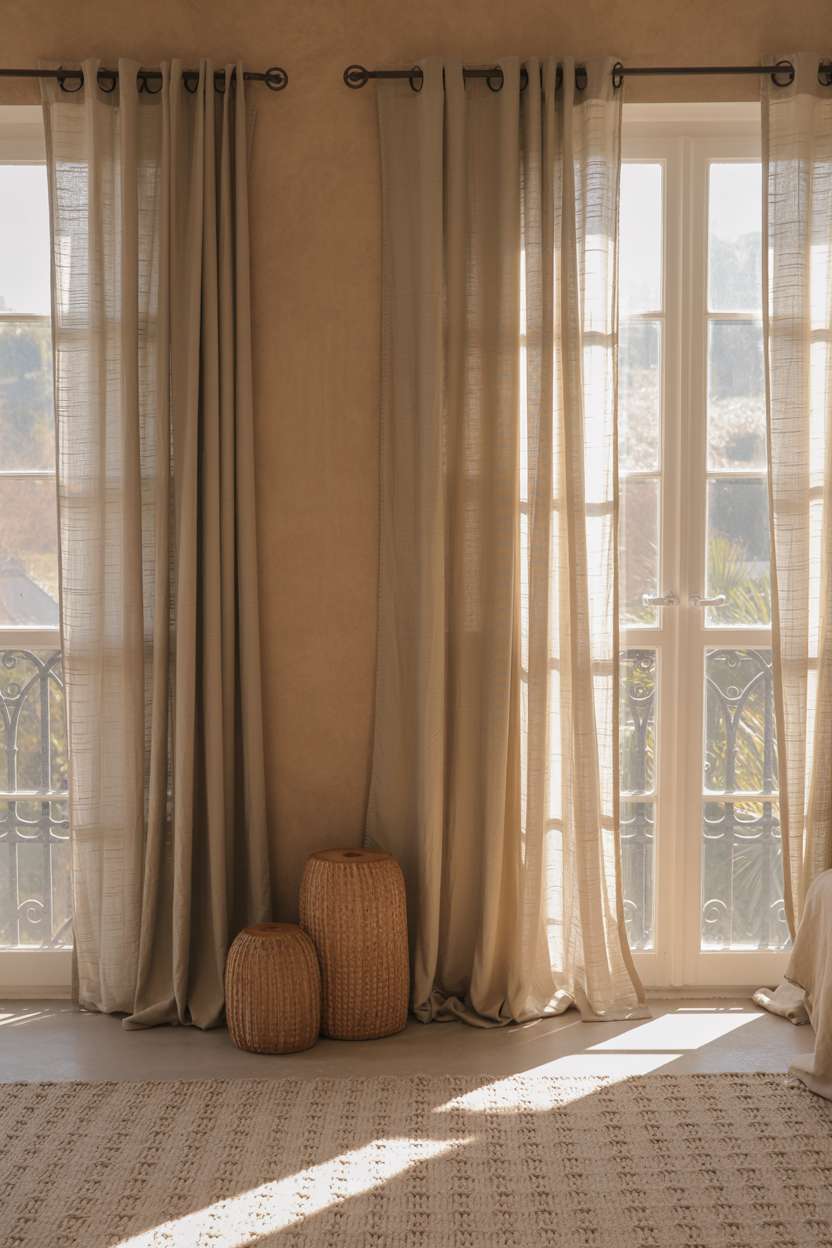
Creating visual balance between cool and warm tones prevents Japandi interiors from feeling either too stark or too cozy.
Cool grays and whites provide freshness, while warm beiges and browns add comfort.
This temperature balance in color choices supports both relaxation and alertness.
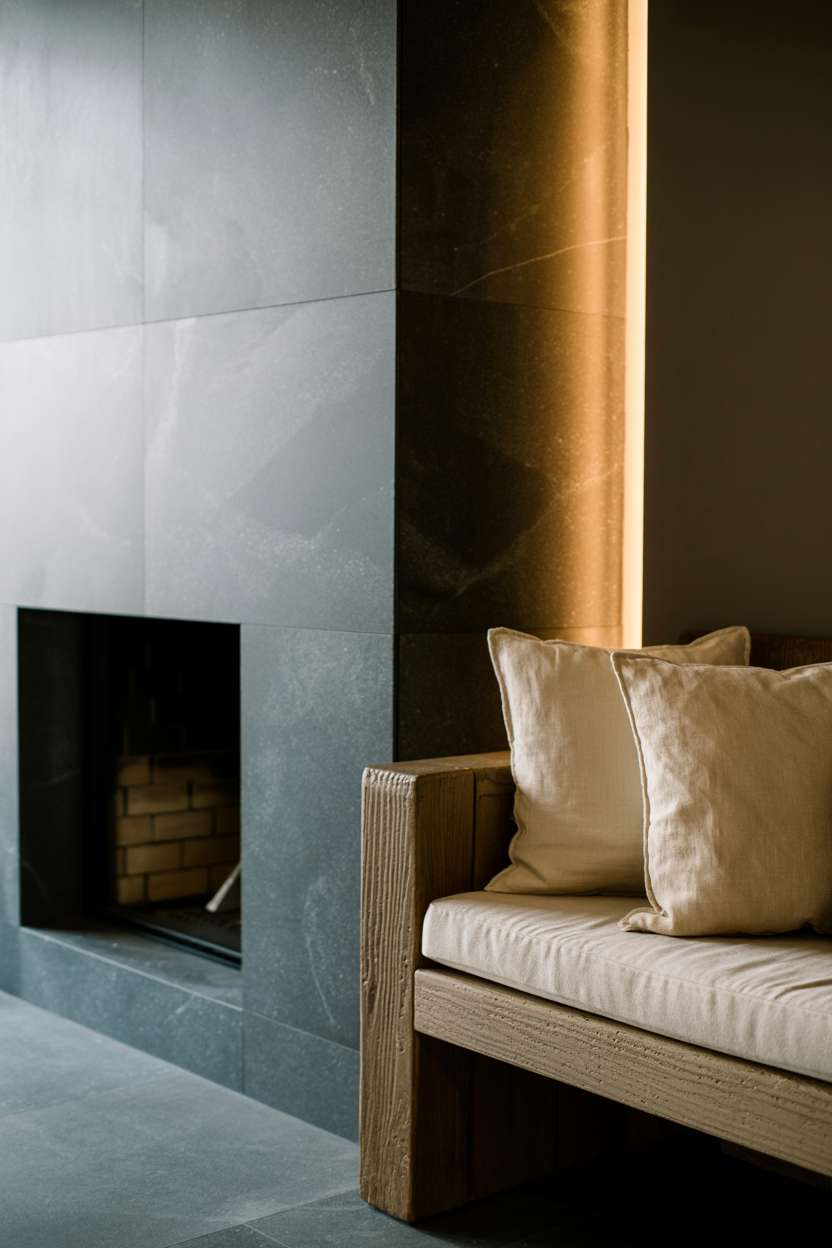
Furniture and Functional Design Elements
Low-Profile and Clean-Lined Furniture
Scandinavian functionality meets Japanese simplicity in Japandi furniture design.
Low-profile pieces create visual spaciousness while maintaining human scale and comfort.
Clean lines eliminate visual distractions, allowing the natural beauty of materials to take center stage.
Multi-purpose pieces serve multiple functions while maintaining aesthetic appeal. Storage ottomans provide seating and organization.
Expandable tables accommodate different needs without permanent space commitment.
This efficiency reflects both Scandinavian practicality and Japanese space consciousness.
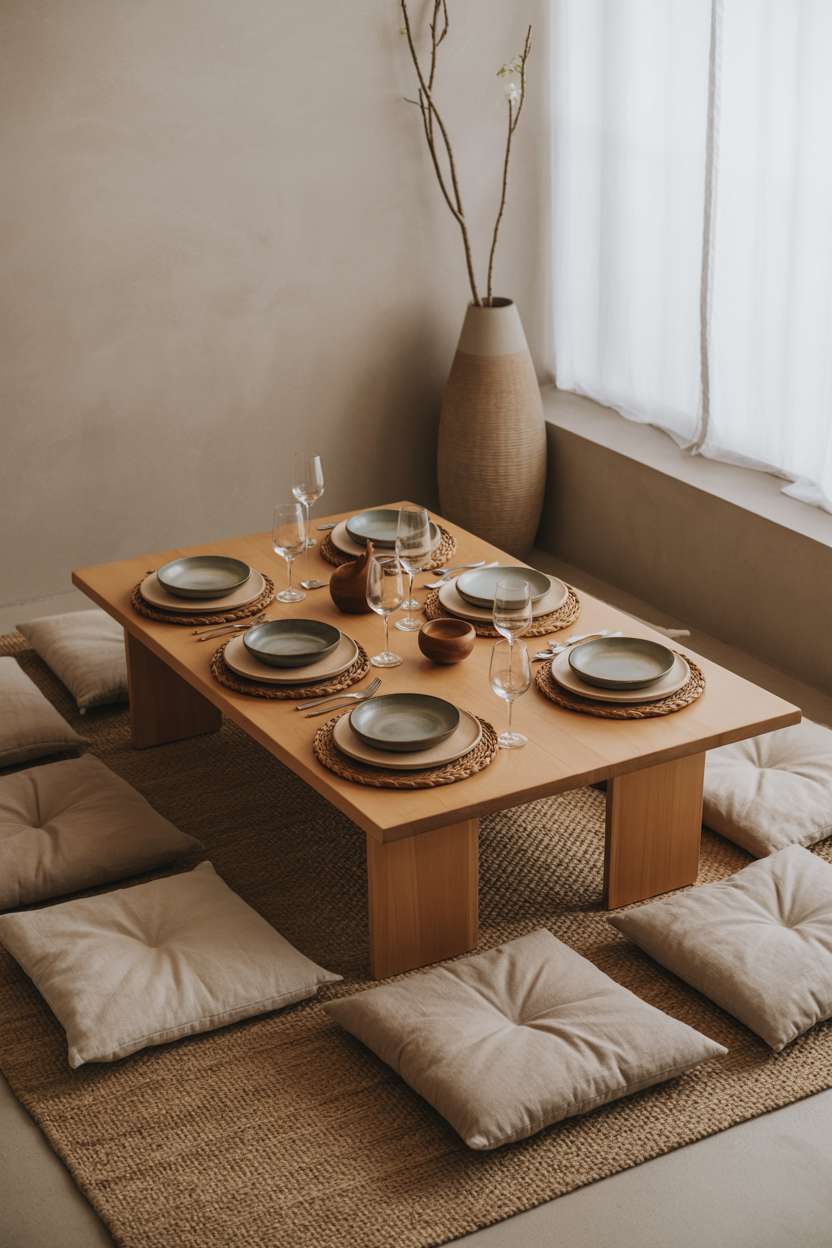
Handcrafted Details and Quality Construction
Artisan-made ceramics and pottery bring a human touch to Japandi interiors.
Slight irregularities in handmade pieces add character that machine-made items cannot replicate.
These imperfections are celebrated as evidence of human creativity and skill.
Traditional joinery techniques in furniture construction reflect respect for time-honored craftsmanship.
Visible joints and construction methods become decorative elements rather than details to hide.
This transparency in construction methods aligns with the Japandi principles of honesty in materials and methods.
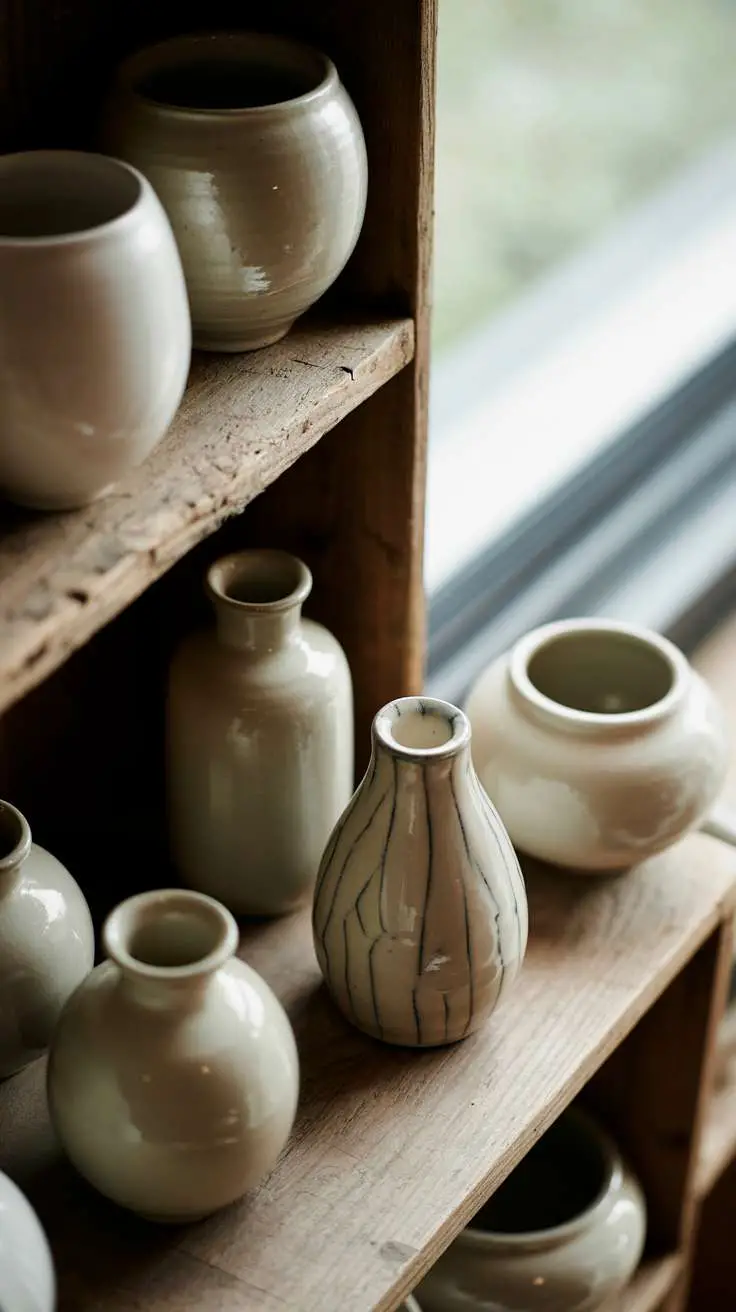
Creating Balance Between Simplicity and Warmth
Layering Textures Without Clutter
Strategic placement of soft textiles prevents Japandi spaces from feeling cold or unwelcoming.
Layered bedding, throw pillows, and blankets add comfort without visual chaos.
Each textile layer serves both practical and aesthetic purposes.
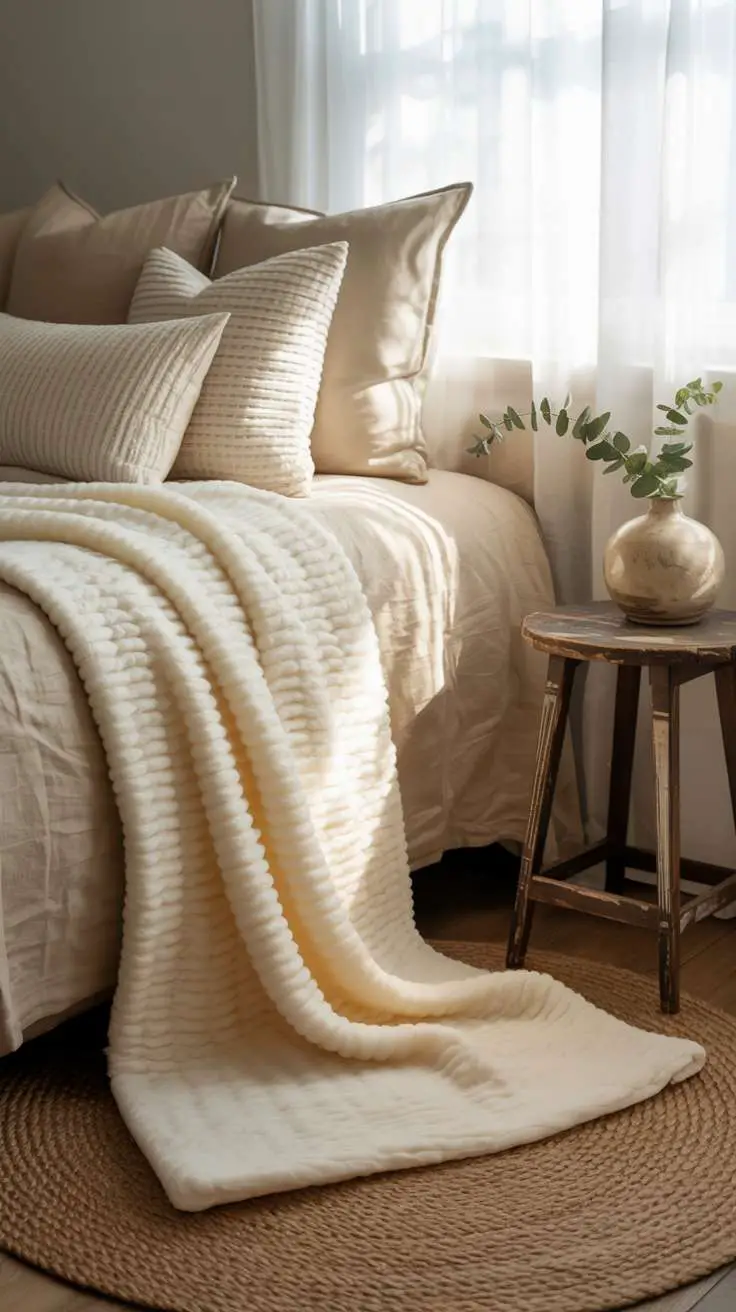
Mixing smooth and rough surfaces creates tactile interest that engages multiple senses.
Smooth ceramic surfaces contrast with rough wooden textures.
Soft fabrics balance hard stone elements.
This interplay of textures adds richness without requiring multiple colors or patterns.
Lighting as a Design Element
Maximizing natural light sources takes priority in Japandi design.
Large windows remain unobstructed when possible. Light-colored surfaces reflect available sunlight throughout spaces.
Natural light’s quality and quantity significantly impact mood and energy levels.
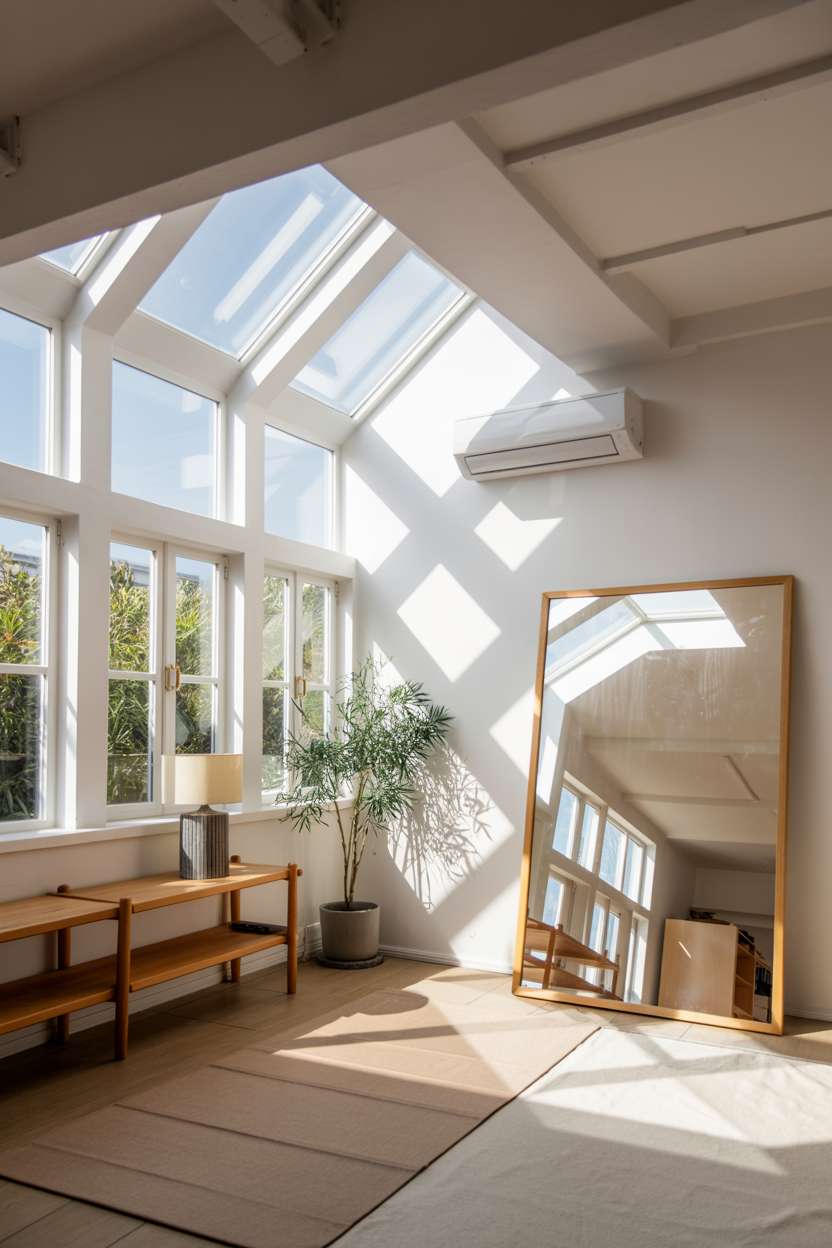
Paper lanterns and wooden light fixtures provide artificial illumination that complements the natural aesthetic.
These lighting choices cast warm, diffused light rather than harsh directional beams.
The fixtures themselves become sculptural elements that contribute to the overall design scheme.
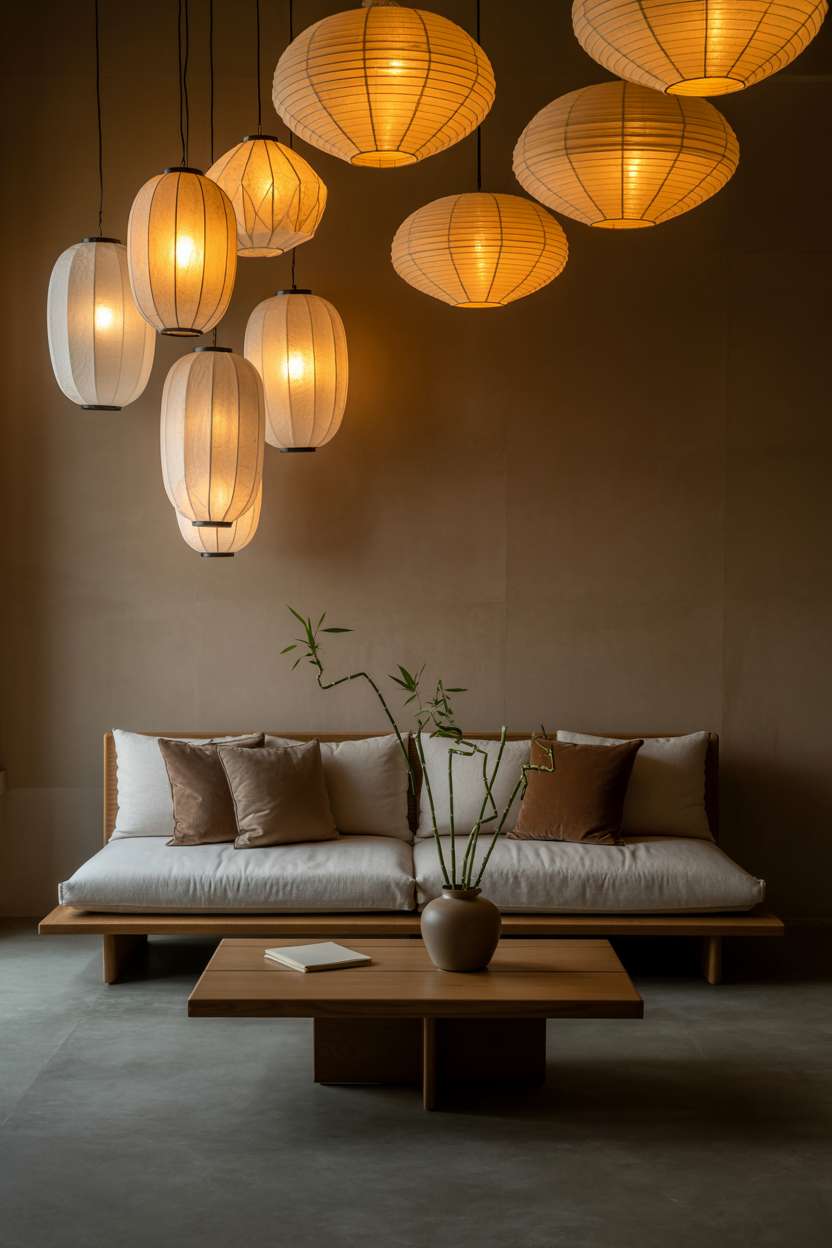
Bringing Nature Indoors
Plant Integration and Biophilic Design
Selecting appropriate plants for Japandi spaces requires consideration of both aesthetic and practical factors.
Plants with simple, sculptural forms work best.
Species that thrive in the available light conditions ensure long-term success.
Plant containers should complement rather than compete with the overall design scheme.
Creating connections between indoor and outdoor environments extends the living space beyond interior walls.
Large windows frame outdoor views like a living artwork. Interior plant choices can echo outdoor landscaping.
This continuity helps inhabitants feel more connected to the natural world.
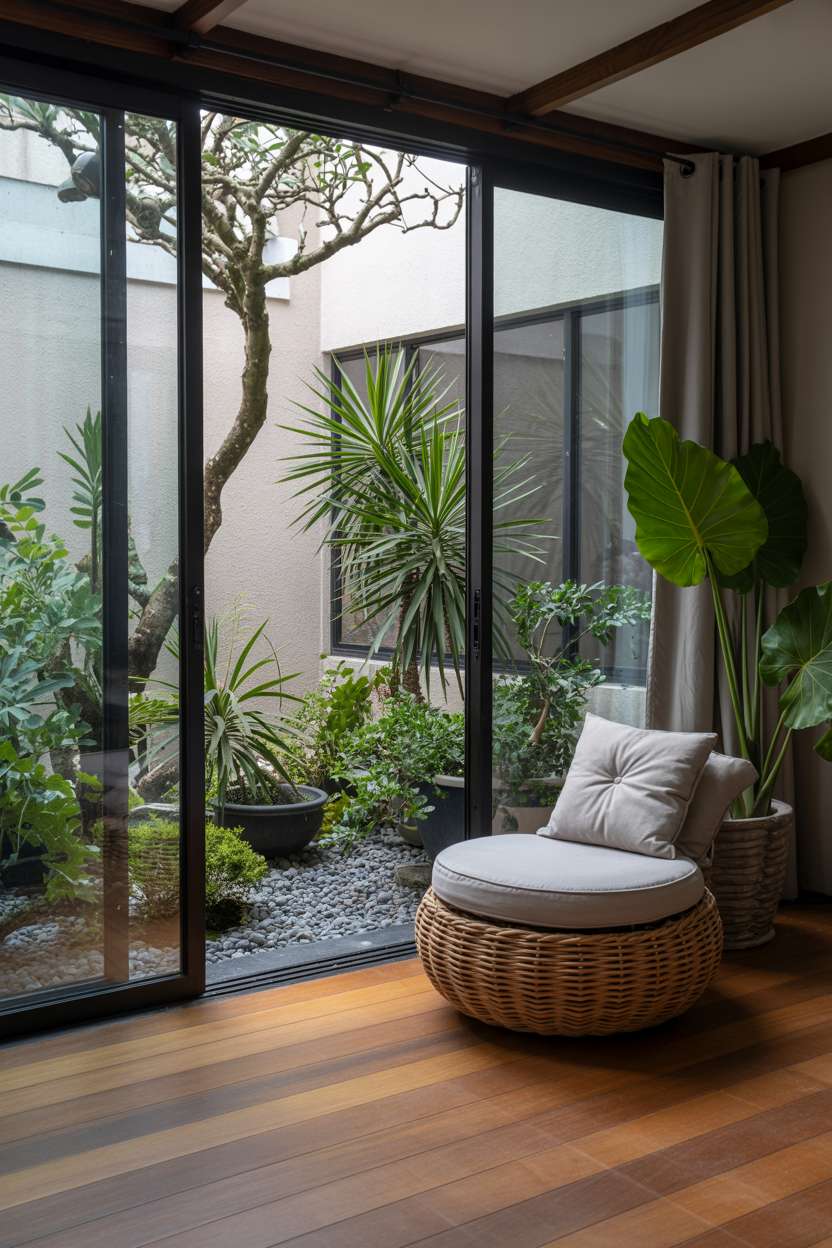
Visual Ideas Collection
Serene Bedroom Retreat
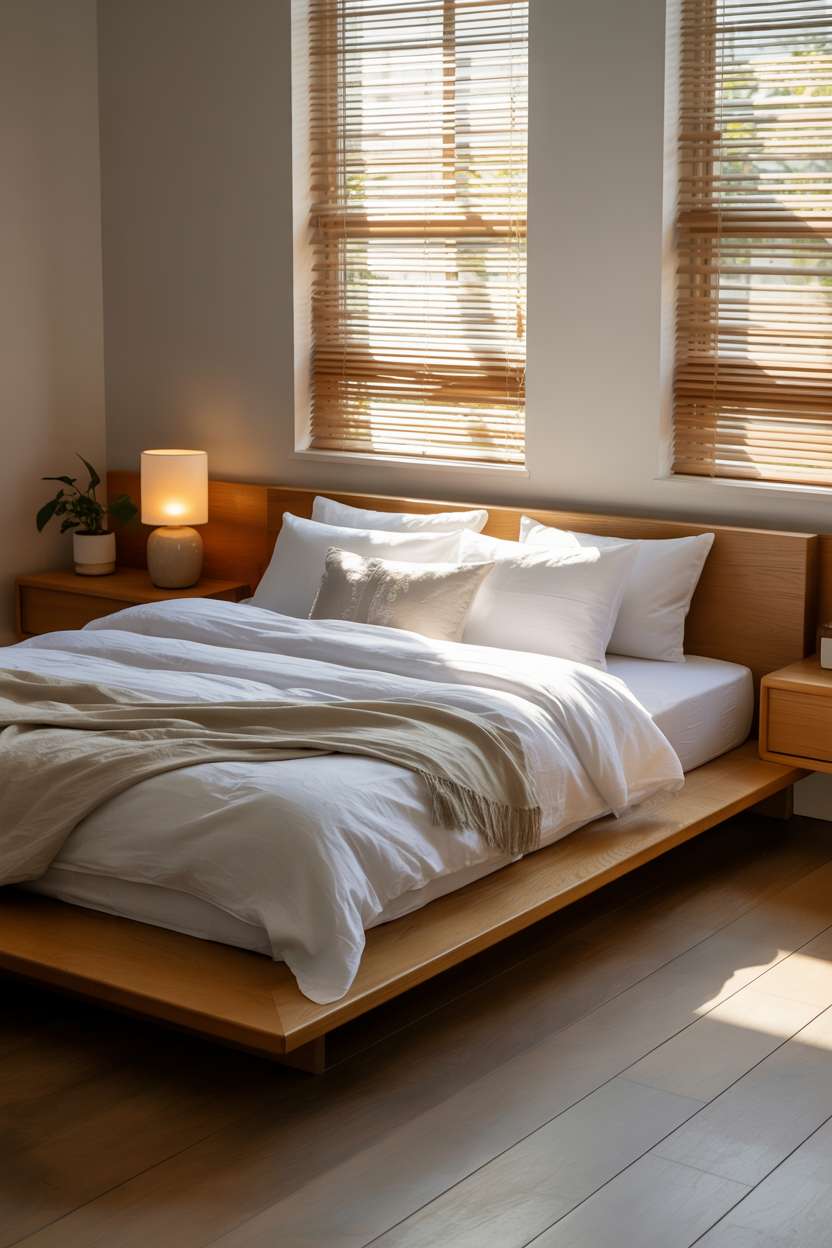
This bedroom design demonstrates how Japandi principles create restful sleeping environments.
The low bed profile maintains visual spaciousness while providing comfort.
Natural materials and muted colors support relaxation and peaceful sleep.
Minimal accessories prevent visual distraction while maintaining warmth through carefully chosen textures.
Minimalist Kitchen Design

The kitchen showcases functional beauty through material honesty and purposeful design.
Open shelving displays beautiful everyday items while maintaining easy access.
Natural materials age gracefully with daily use.
The herb garden provides fresh ingredients while adding living elements to the space.
Cozy Living Room Corner
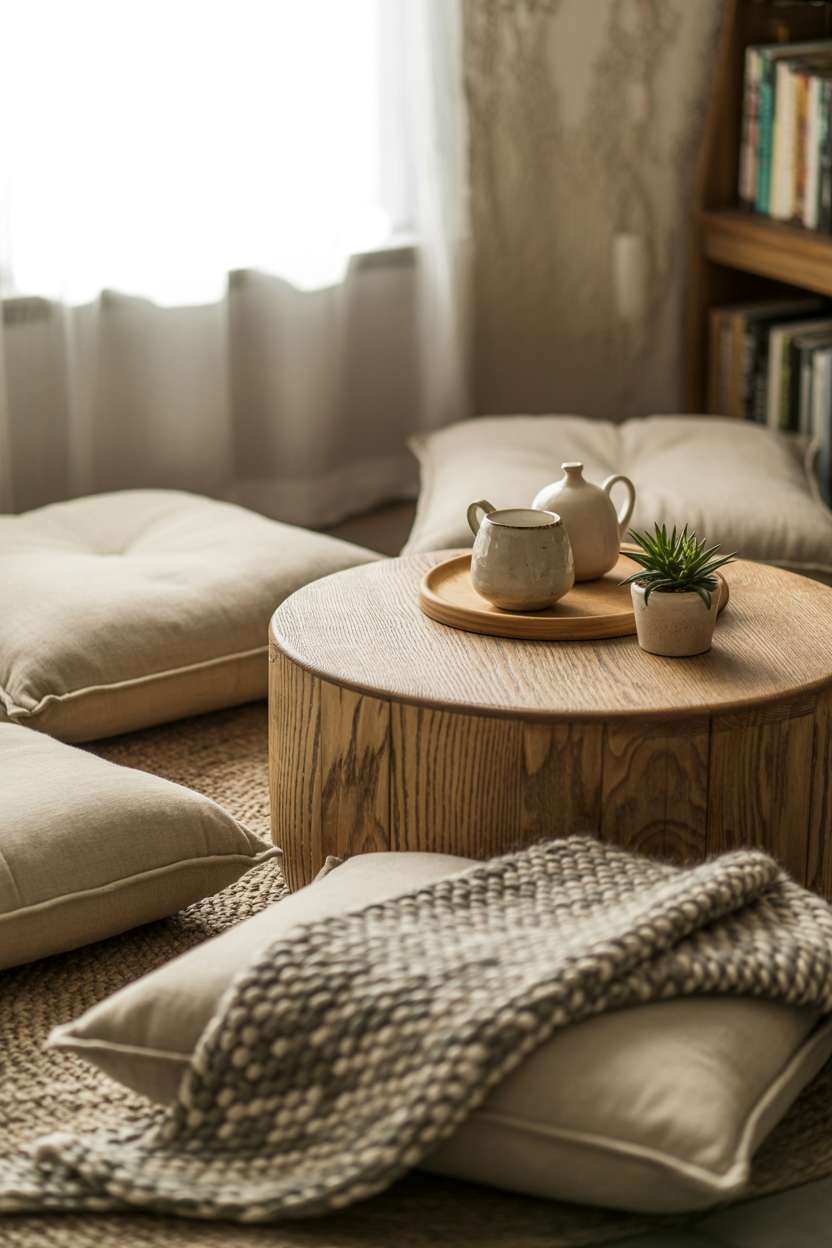
This arrangement creates an inviting space for relaxation and connection.
Floor seating encourages a slower pace of life and a closer connection to the ground.
Handmade textiles and ceramics add warmth through their imperfect beauty.
The low table scale promotes intimate conversation and mindful tea ceremonies.
Tranquil Bathroom Sanctuary
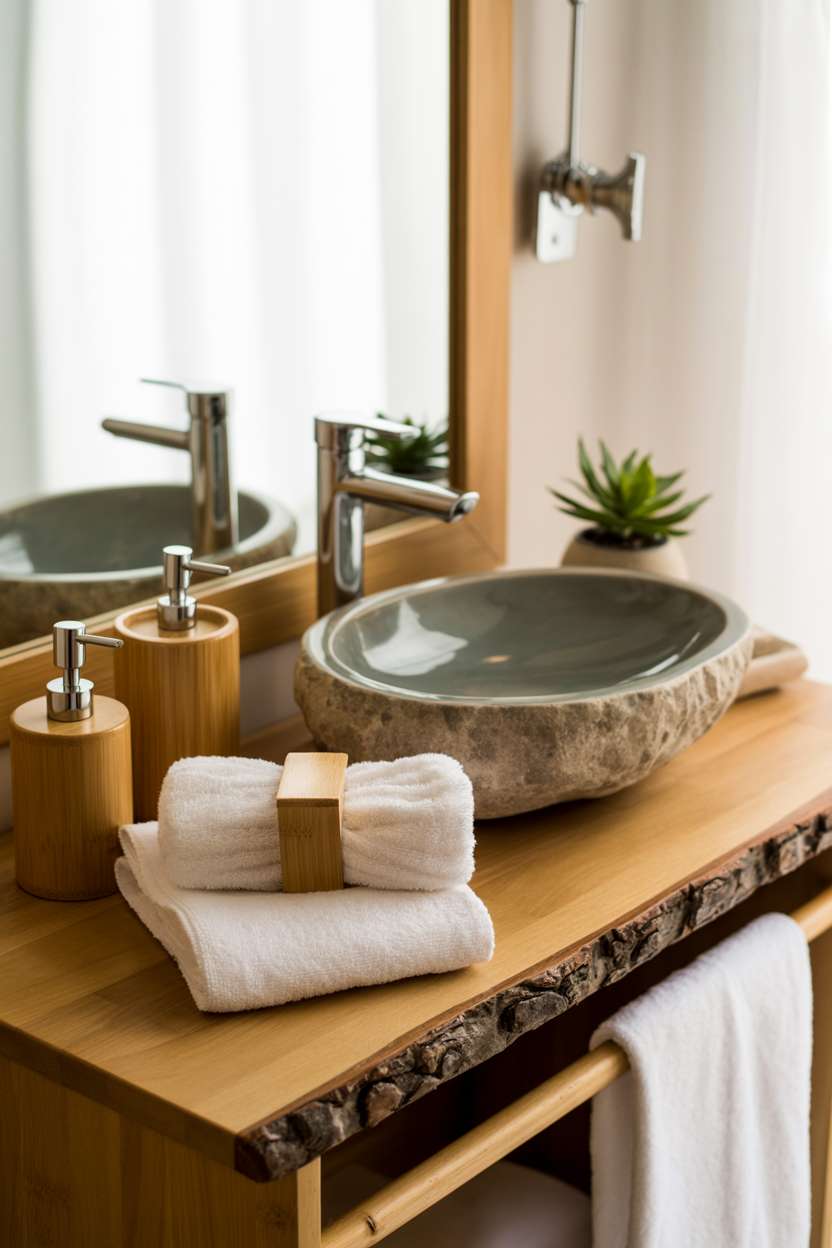
The bathroom design emphasizes cleanliness and serenity through natural materials and minimal accessories.
Stone and wood materials handle moisture while maintaining beauty.
The succulent requires minimal care while adding life to the space.
Frosted glass provides privacy while maximizing natural light.
Peaceful Reading Nook
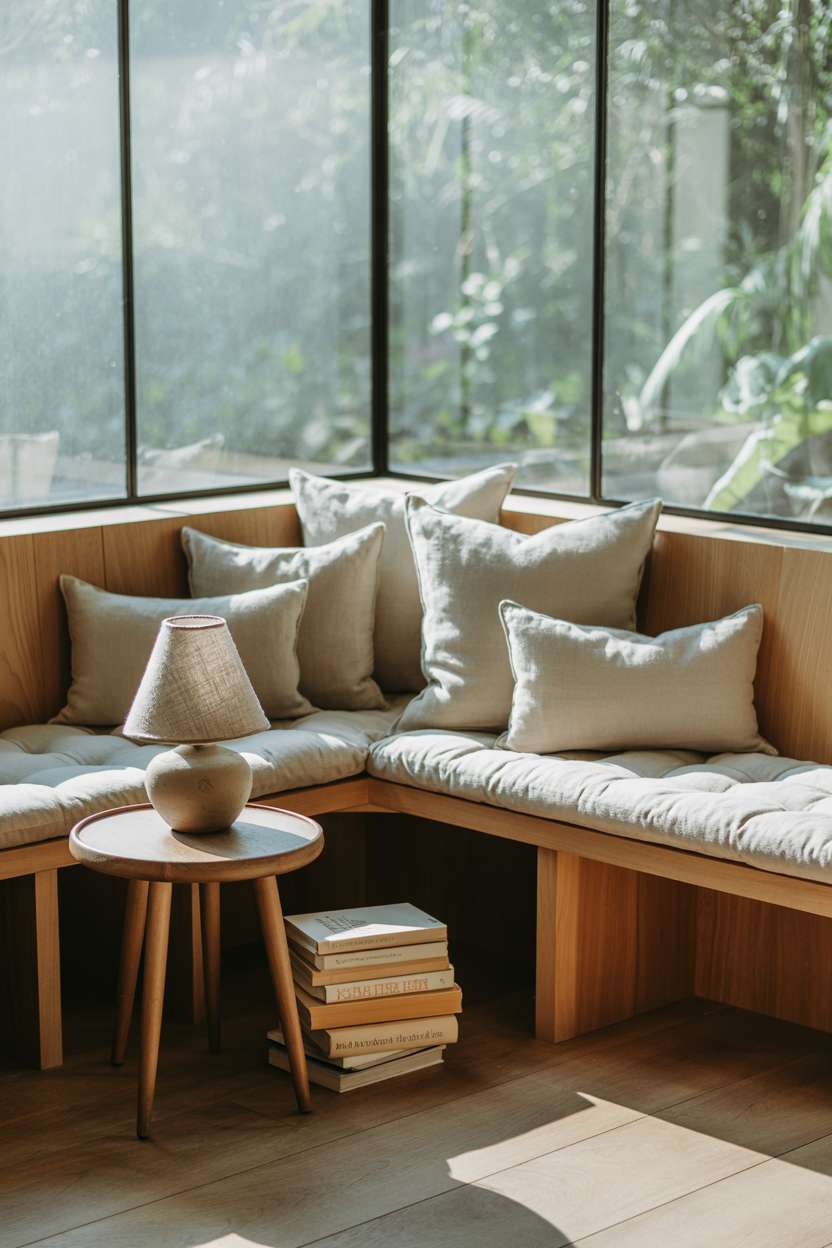
Reading nooks provide dedicated spaces for quiet activities and reflection.
Built-in seating maximizes space efficiency while creating custom comfort.
The garden view provides mental rest between reading sessions.
Natural light reduces eye strain during extended reading periods.
Conclusion
Japandi interior design creates harmonious living spaces through the thoughtful combination of Japanese minimalism and Scandinavian comfort.
This design approach emphasizes natural materials, muted color palettes, and intentional design choices that support both function and beauty.
By celebrating imperfection through wabi-sabi and embracing coziness through hygge, Japandi interiors offer a peaceful refuge from the complexity of modern life.
The style’s focus on quality craftsmanship, sustainable materials, and connection to nature creates homes that nurture both body and spirit while remaining relevant for contemporary living needs.

